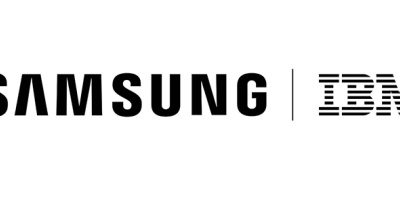Opel started as a sales representative in Missouri in 1949 and became company president 25 years later before being named CEO and Board chairman.
Opel was IBM's chief executive officer from January 1981 through January 1985 and Chairman of the Board from February 1983 through May 1986. He died Thursday, November 3.
After Opel graduated from the University of Chicago with an MBA in 1949, he had two job offers. One was to rewrite economics textbooks and the other was to take over his father’s Jefferson City, Missouri, hardware store. Neither seemed especially appealing. He went fishing with his dad and a family friend to mull things over. While they were out in the boat, the friend, Harry Strait, an IBM sales manager, hooked Opel rather than a fish—offering him a job selling business equipment in central Missouri. That chance encounter launched a career for Opel at IBM that spanned 36 years and culminated with him presiding over one of the most successful companies in the world.
He joined IBM as a sales representative in 1949, working in the Jefferson City, Missouri, branch office. He became a vice president in 1966, the head of IBM's Data Processing Product Group in 1972, and president of the company in 1974.
Opel’s years at IBM coincided with the company’s rise from a modest-sized maker of accounting devices to become the leader of a burgeoning computer industry and a trend-setter for the Information Age. He was president from 1974 to 1983 and CEO from 1981 to 1985, navigating the company safely through a number of minefields, including the advent of the personal computer and a long U.S. antitrust investigation. “He was a great leader,” recalls Patrick Toole, a long-time IBM executive who joined the company in 1960. “He was good with customers and his colleagues. Everybody trusted him.”
Asked in a 2010 interview what had sustained IBM for nearly 100 years, Opel said it was the values engendered by Thomas J. Watson Sr., who ran the company from 1914 until he retired in 1952. Watson preached that the company should be run based on its beliefs, which included respect for the individual, dedication to customer satisfaction, and a pledge to perform every task in a superior way. For Opel, the way the company treated people was its most important attribute. “Mutual respect and openness and honesty among people is what makes a company work well over time,” he said.
In an era when many chief executives were driven by ego and some belittled those around them, Opel was self-effacing and sensitive to other people’s points of view and feelings. An English major at Westminster College in Missouri, he read voraciously throughout his life, including poetry. He was a bird-watcher as well as a fisherman.
Yet he was no pushover. “He challenged people’s assumptions. He was always pushing the edge,” recalls Nicholas Donofrio, a longtime IBM executive who joined the company in 1964. Donofrio recalls a meeting of the corporate management board in the early 1980s when Opel addressed the issue of cigarette smoking. Most of the men in the room were smokers, yet Opel looked around at them and predicted that within a decade IBM would be a smoke-free environment. And he had the nerve to ask his smoker colleagues to help him lead the transition.
Opel learned how to manage people at the side of Thomas J. Watson Jr., who ran the company from 1952 to 1970. Watson summoned Opel from the hinterlands and made him his executive assistant in 1959 after watching him teach a couple of sales classes in Endicott, New York. Working with Watson at IBM headquarters in Armonk, New York, Opel was impressed with the way Watson dealt with his executives. He’d insist on a full debate on any fundamental disagreement, and he didn’t let his personal feelings about any executive prevent him from giving the individual a fair hearing.
Opel hadn’t an inkling that he was headed for the top of the corporate ladder when he joined the company and began selling electronic accounting machines and time clocks in poor, dusty towns in Missouri’s Ozarks region. Back in those days, an IBM salesman installed the equipment he sold, so Opel became adept with pliers and screwdrivers even while he learned how to make an effective sales pitch. He told a story to IBM’s Think magazine in 1974 that captures the flavor of being an IBM salesman in a rural area during that era. He had a clock system in Centralia, Missouri, that was connected to a fire alarm. During a maintenance call, he made a mistake when he adjusted the timer. The next morning, a Sunday, when the entire volunteer fire department was in church, the alarm went off improperly and the church practically emptied out. “We had programming difficulties in those days, too,” he told the Think interviewer.
During his long career, Opel wore many hats. After selling for a decade and then working as Watson’s assistant, he made his mark by managing the launch of IBM’s System 360 mainframe family in 1964. He later headed up communications, ran product divisions, and served as the chief financial officer. When he was president, Opel and his mentor, CEO Frank Cary, set up a skunk-works project that resulted in the introduction of the IBM Personal Computer in the summer of 1981, just a few months after Opel took the reins of the company. That marked the beginning of the rapid adoption of PCs by businesses. In those days, he said, it was in IBM’s nature to adapt quickly when new technologies came along. “We constantly were willing to change and were accelerating our ability to change,” he said.
Opel rejected the idea that good leadership could be codified in a set of detailed rules. “You can’t write rules about things like that,” he said. “You just have to be alert, and be thoughtful. And you have to rely a lot on the wisdom that exists in your employees.




















 More than ever, there is a demand for IT to deliver innovation. Your IBM i has been an essential part of your business operations for years. However, your organization may struggle to maintain the current system and implement new projects. The thousands of customers we've worked with and surveyed state that expectations regarding the digital footprint and vision of the company are not aligned with the current IT environment.
More than ever, there is a demand for IT to deliver innovation. Your IBM i has been an essential part of your business operations for years. However, your organization may struggle to maintain the current system and implement new projects. The thousands of customers we've worked with and surveyed state that expectations regarding the digital footprint and vision of the company are not aligned with the current IT environment. TRY the one package that solves all your document design and printing challenges on all your platforms. Produce bar code labels, electronic forms, ad hoc reports, and RFID tags – without programming! MarkMagic is the only document design and print solution that combines report writing, WYSIWYG label and forms design, and conditional printing in one integrated product. Make sure your data survives when catastrophe hits. Request your trial now! Request Now.
TRY the one package that solves all your document design and printing challenges on all your platforms. Produce bar code labels, electronic forms, ad hoc reports, and RFID tags – without programming! MarkMagic is the only document design and print solution that combines report writing, WYSIWYG label and forms design, and conditional printing in one integrated product. Make sure your data survives when catastrophe hits. Request your trial now! Request Now. Forms of ransomware has been around for over 30 years, and with more and more organizations suffering attacks each year, it continues to endure. What has made ransomware such a durable threat and what is the best way to combat it? In order to prevent ransomware, organizations must first understand how it works.
Forms of ransomware has been around for over 30 years, and with more and more organizations suffering attacks each year, it continues to endure. What has made ransomware such a durable threat and what is the best way to combat it? In order to prevent ransomware, organizations must first understand how it works. Disaster protection is vital to every business. Yet, it often consists of patched together procedures that are prone to error. From automatic backups to data encryption to media management, Robot automates the routine (yet often complex) tasks of iSeries backup and recovery, saving you time and money and making the process safer and more reliable. Automate your backups with the Robot Backup and Recovery Solution. Key features include:
Disaster protection is vital to every business. Yet, it often consists of patched together procedures that are prone to error. From automatic backups to data encryption to media management, Robot automates the routine (yet often complex) tasks of iSeries backup and recovery, saving you time and money and making the process safer and more reliable. Automate your backups with the Robot Backup and Recovery Solution. Key features include: Business users want new applications now. Market and regulatory pressures require faster application updates and delivery into production. Your IBM i developers may be approaching retirement, and you see no sure way to fill their positions with experienced developers. In addition, you may be caught between maintaining your existing applications and the uncertainty of moving to something new.
Business users want new applications now. Market and regulatory pressures require faster application updates and delivery into production. Your IBM i developers may be approaching retirement, and you see no sure way to fill their positions with experienced developers. In addition, you may be caught between maintaining your existing applications and the uncertainty of moving to something new. IT managers hoping to find new IBM i talent are discovering that the pool of experienced RPG programmers and operators or administrators with intimate knowledge of the operating system and the applications that run on it is small. This begs the question: How will you manage the platform that supports such a big part of your business? This guide offers strategies and software suggestions to help you plan IT staffing and resources and smooth the transition after your AS/400 talent retires. Read on to learn:
IT managers hoping to find new IBM i talent are discovering that the pool of experienced RPG programmers and operators or administrators with intimate knowledge of the operating system and the applications that run on it is small. This begs the question: How will you manage the platform that supports such a big part of your business? This guide offers strategies and software suggestions to help you plan IT staffing and resources and smooth the transition after your AS/400 talent retires. Read on to learn:
LATEST COMMENTS
MC Press Online